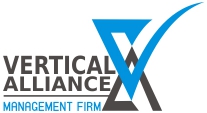There could be many diverse types of reasons why many businesses fail to succeed. It is widespread that in the same business type, one organization is shining leaps and bounds and another organization is in free fall though the market is the same for both. So what is the root cause of this failure? There could be many, but we will try to focus on the main reason for failure in this article.
Having clear roles & responsibilities is a basic requirement of ISO 9001:2015 Quality Management system standard. Unfortunately, organizations are not fully aware of why it is so important to have clarity in the organization for roles & responsibilities. Either they are not understanding it completely or apply it just to meet the requirement of the standard half-heartedly.
It can be seen in many organizations that they are making their organizational charts by designations instead of putting names to avoid frequent revisions in the document. Though it is ok and meets the requirement, in this way, we are killing the essence of why we need to have organizational charts.
Because of unclarity in the roles & responsibilities, top management is usually involved in micromanagement in the company for day-to-day operations. We need to realize that this is not what their role should be. Top management needs to focus on leadership, vision & mission. They suppose to develop policies & procedures that are to be followed by the rest of the organization. They need to work on future expansions & new projects for the company but instead, they are sometimes so much involved in routine matters that they just forget what their actual role is.
1. It should represent reporting structure in the organization
2. Better to have an organizational chart function wise
3. Mult Tasking should be presented in the organizational chart
4. Organizational chart should show the filled positions, vacant positions, and future plans for hiring
5. Future hiring plans could be divided into immediate hiring in the next three months, hiring after six months, or after a year
6. Positions in the organizational chart should be placed as per the hierarchy chart of the organization
7. Organizational charts should be prepared by name and function
8. Do not be afraid to revise it, if there are frequent changes let it be and edit the document every time.
9. Revision of the organizational chart should be controlled
10. If there are many employees who are performing the same role, we can put their numbers instead of names
11. For large organizations, departmental organizational charts can be prepared separately
12. Further details about roles & responsibilities can detail in the Job descriptions for each role

